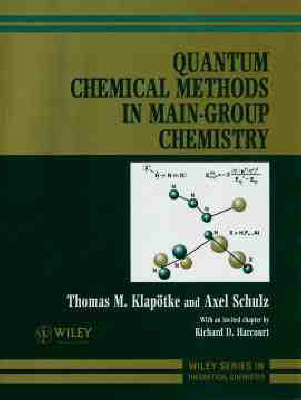Wiley Series in Theoretical Chemistry
1 total work
Quantum Chemical Methods in Main-Group Chemistry
by Thomas M. Klapoetke and Axel Schulz
Published 18 September 1998
Quantum Chemical Methods In Main-Group Chemistry Thomas M. Klapötke Axel Schulz University of Munich, Germany With an invited chapter by Richard D. Harcourt University of Melbourne, Australia Computational quantum chemistry has emerged in recent years as a key tool for the elucidation of molecular structure and molecular properties. However, it is still sometimes regarded as a highly theoretical subject of limited practical value. In this book the authors emphasize the strong link between quantum chemical calculations and experiment. The book is a fascinating blend of theory and experiment, and deals with topical and interesting molecules, using state-of-the-art techniques and accompanied by full explanations. In Part 1 of Quantum Chemical Methods in Main-Group Chemistry, modern quantum mechanical procedures are described in a concise and systematic manner. Sufficient theory is provided to enable the reader to come to terms with the primary features of the methodology. In Part II, numerous applications of these procedures are described. These applications provide extensive consideration of highly topical and interesting modern chemistry, and also illustrate aspects of the methodology. Part III, which is new in the English edition, is written by Professor Richard D. Harcourt. To provide a fully balanced approach to the subject, this part provides valence bond descriptions, and considerable attention is given to the use of Pauling three-electron bonds and increased valence structures. Relevant valence-bond concepts are reviewed briefly in the first chapters of Part III. Quantum Mechanical Methods in Main-Group Chemistry provides an invaluable link between computational quantum chemical techniques and practical, modern chemistry. As such, it is an important resource for both the advanced undergraduate and postgraduate student, and also for the more experienced researcher.
